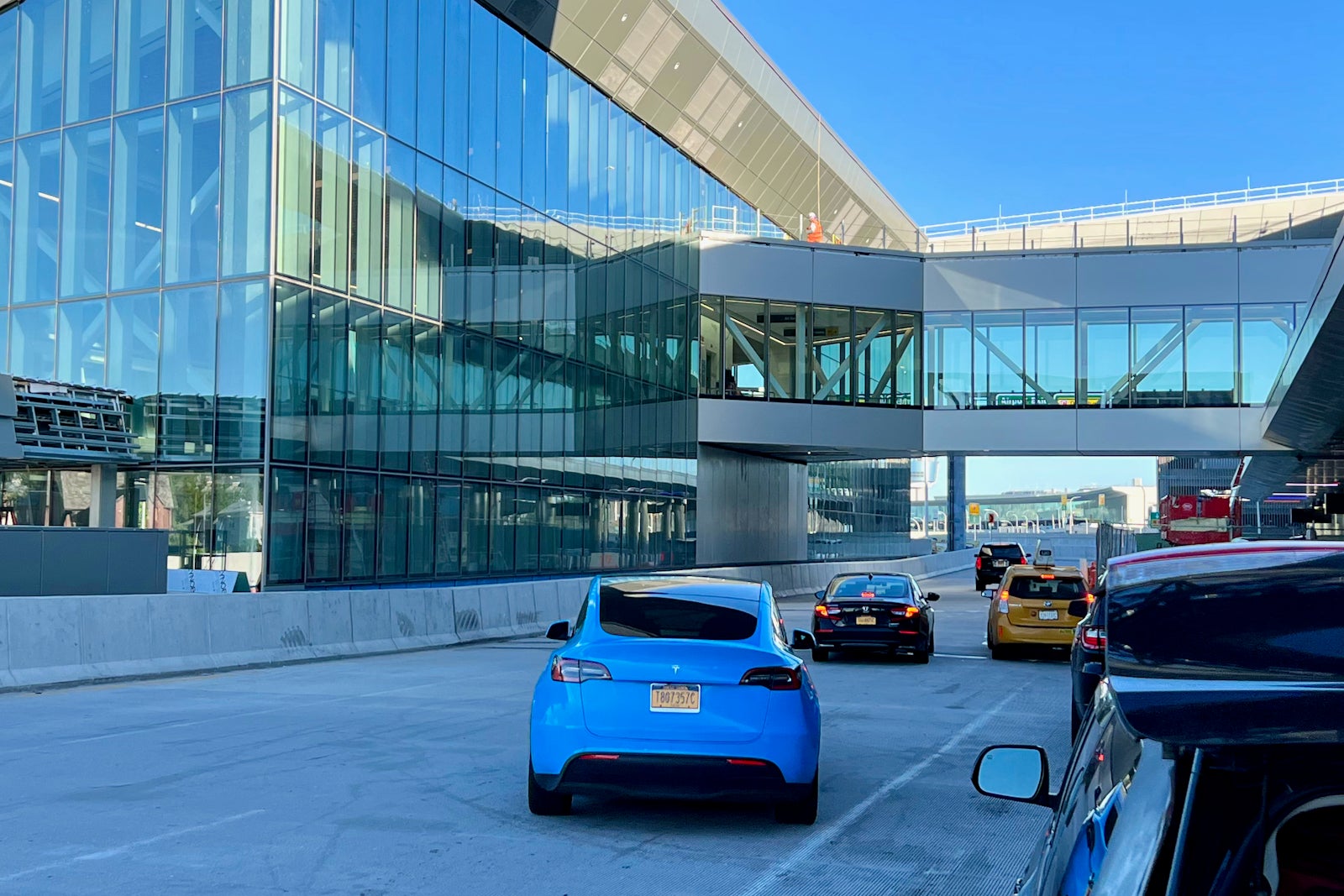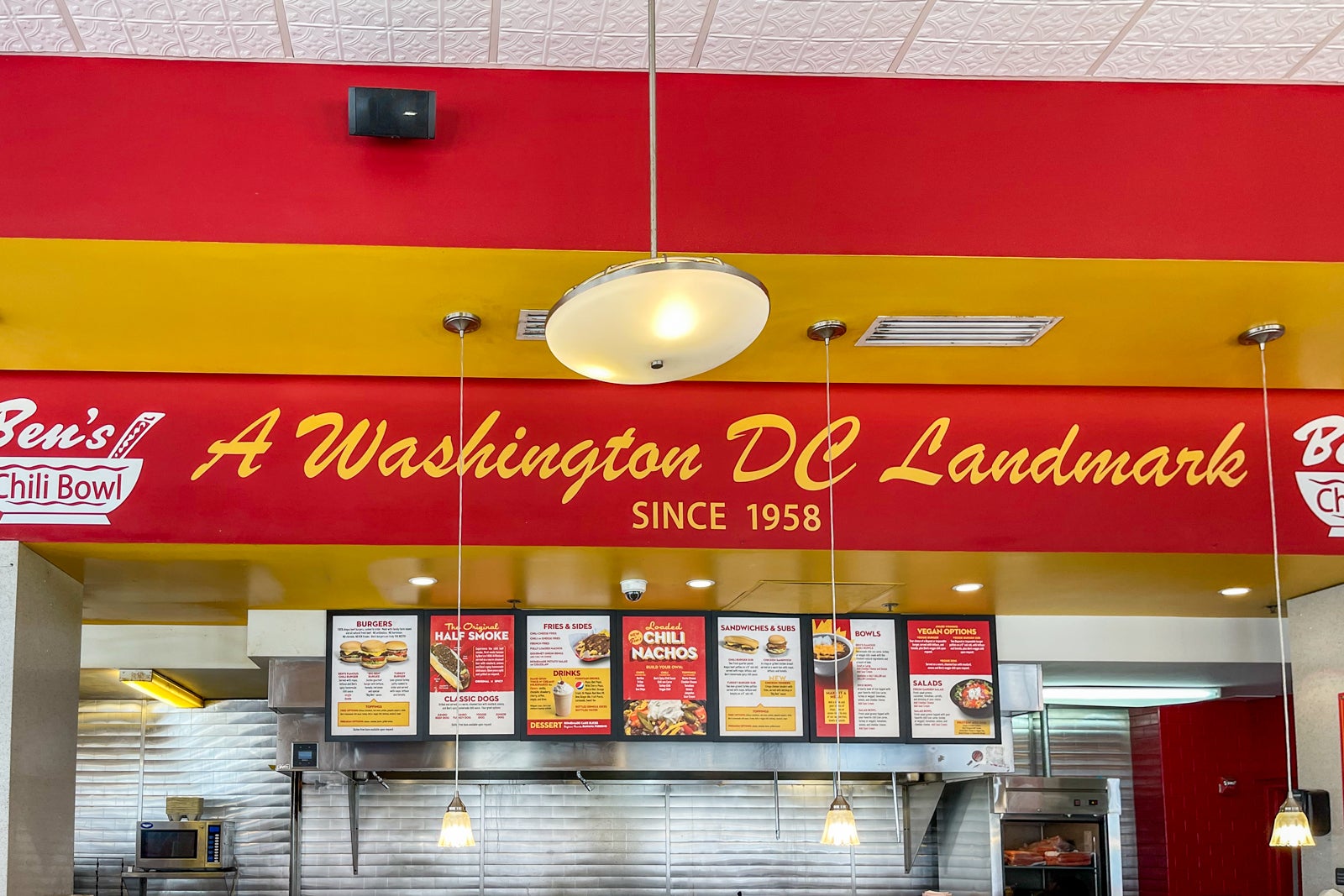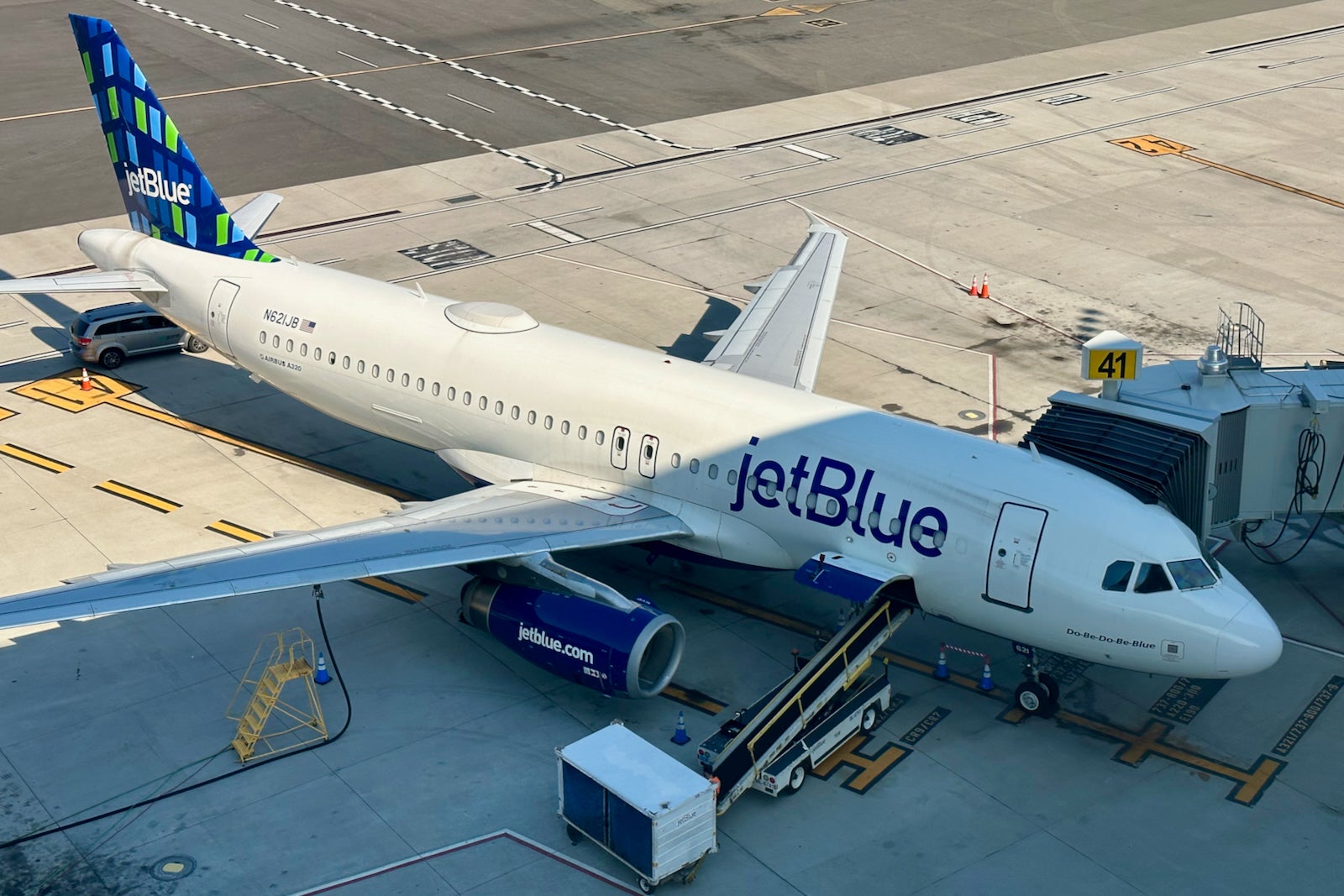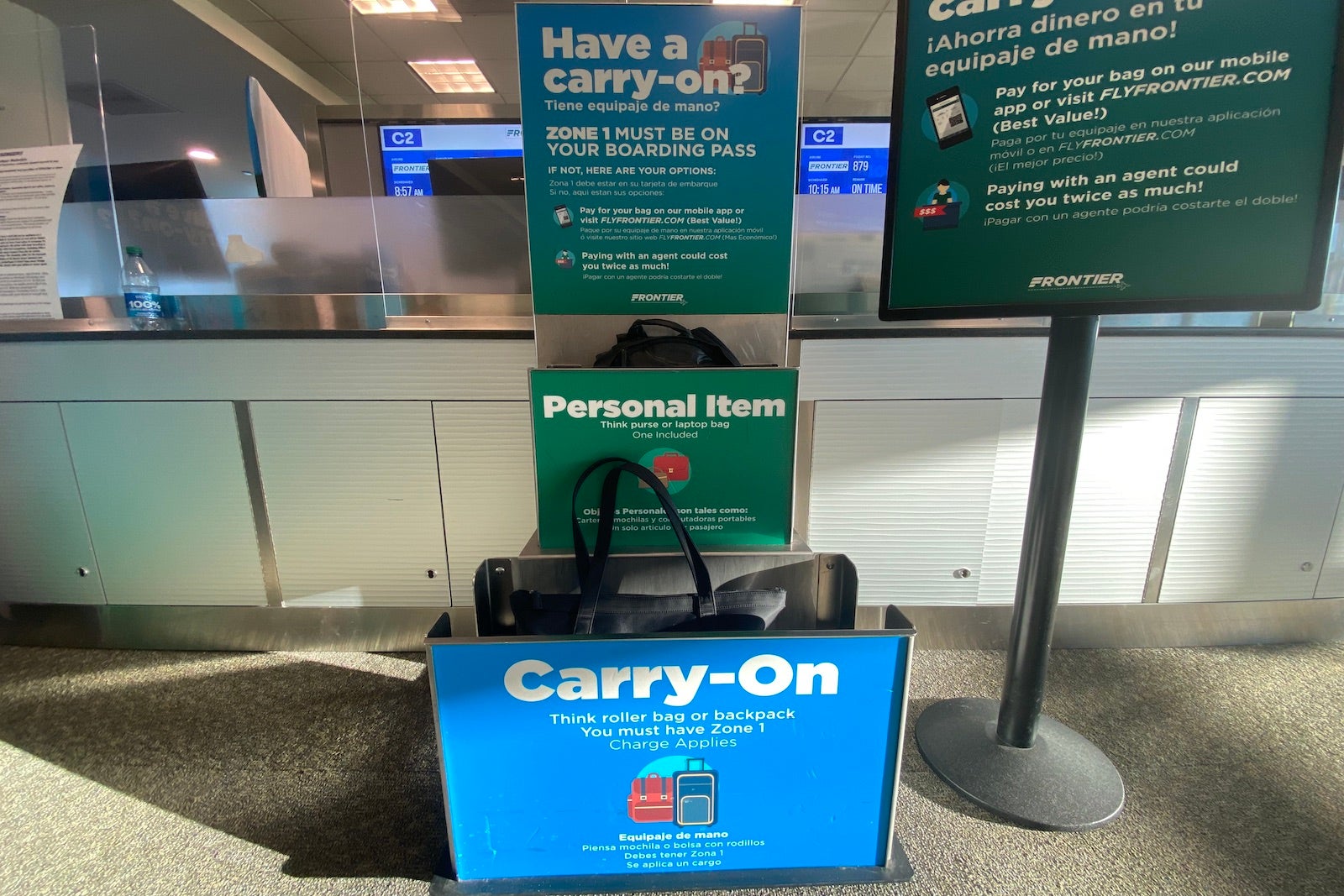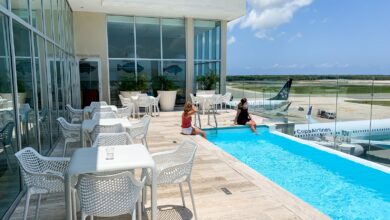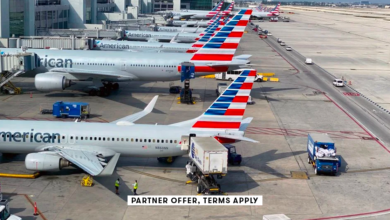Here’s what you need to know about travel price spikes
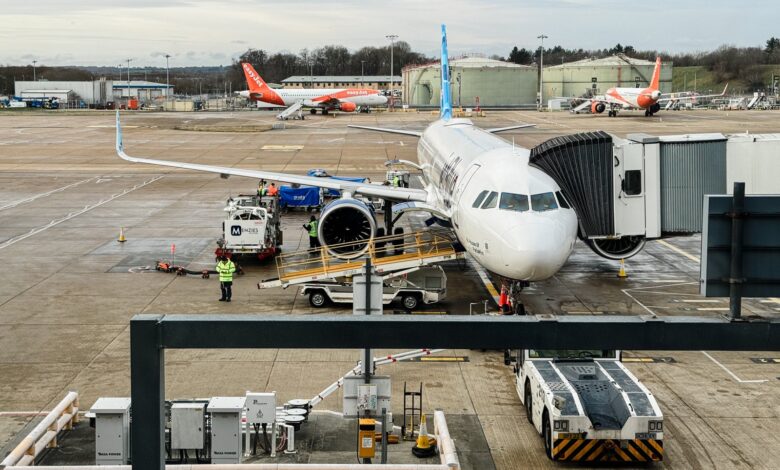
JetBlue caused a firestorm earlier this year when the airline announced it would start charging dynamic baggage fees. A first checked bag costs $45 on “off-peak” flights and $50 on “peak” days and times. For a second checked bag, the fee can jump to $70, and the price is even higher if you book within 24 hours of your flight. Plus, JetBlue has increased costs of checked baggage a few times this year.
From restaurants to ride-hailing, dynamic pricing (or surge pricing) seems to be spreading like an epidemic across the travel landscape. Dynamically priced award miles have long been the norm, but now off-peak and peak pricing have spread to other essential parts of the travel experience, with JetBlue being the most recent example.
“Dynamic pricing reflects a fundamental economics—supply and demand,” says Henry Harteveldt, president of Atmosphere Research Group, a travel industry consulting and market research firm. “An airline may have a finite amount of product, so the airline can raise prices.”
Harteveldt said he expects dynamic pricing to become a bigger issue for travelers in the future. “The downside of dynamic pricing is that consumers don’t know what the price is going to be,” he said. “One day it might be $30, another day it might be $45, and another day it might be $15. Unfortunately, travel is an afterthought. Airlines aren’t thinking about the consumer when they make these decisions.”
Here’s where we’ve seen dynamic pricing in action and where it might appear next.
Ride-hailing app
Ride-hailing apps’ business models are based on dynamic pricing. The higher the demand, the higher the price. In theory, higher prices encourage more drivers to sign on and work. You’re more likely to encounter surge pricing during inclement weather or popular events (like concerts) when driving in a certain area might be difficult or crowded.
In my opinion, Uber, Lyft, and even Revel have all gotten better at raising their prices as high as possible without driving customers away. When I land at New York-area airports, I often check all three apps to see which might be cheaper. Usually, the prices are within a few dollars of each other.
Now, non-ride-hailing businesses are looking to copy and capitalize on this model.
Award tickets on multiple airlines
As you’ve probably noticed, many airlines have switched to fully dynamic award pricing, and today award prices are almost identical to cash prices. This is especially true with Delta Air Lines. It’s rare to get more than a penny per mile in value with Delta redemptions.

Daily News
Reward your inbox with the TPG Daily newsletter
Join over 700,000 readers to get the latest news, in-depth guides, and exclusive offers from TPG experts
Related: Dynamic airline award pricing is out of control — here are some ways to fix it
Delta SkyMiles was the first major program to abandon its award chart in 2015. Here’s an example of a one-way business class flight from New York’s John F. Kennedy International Airport (JFK) to London’s Heathrow Airport (LHR) in August. You’d pay between 200,000 and 280,000 miles using SkyMiles to book the flight. The cash price is $2,283. Even in the best-case scenario, if you used your miles for this flight, you’d barely earn more than a penny per mile.
Of course, American Airlines and United Airlines have also dropped their award charts. I distinctly remember being able to book an American Airlines flight to Europe for 50,000 AAdvantage miles one way in business class. Previously, most airline loyalty programs used zones or distance. award chartallowing members to look up how many points or miles they need to travel to any city and in any class. Those days are long gone.
While such good deals are rare, you can still occasionally find good mileage deals with American AAdvantage and United MileagePlus. That’s rarely the case with Delta. When it comes to U.S. airlines, the good days are almost over.
Related: Flexible pricing vs. fuel surcharges — which is the less bad option for your next redemption?
Restaurant
Wendy faced backlash when she announced she would be launching dynamically priced menu items by 2025. Reports say things like burgers and fries will cost more than usual during peak hours, when restaurants are busiest. However, Wendy’s insists the whole thing is a misunderstanding.
“This has been misinterpreted in some media reports as an intention to increase prices when demand is highest at our restaurants. We have no plans to do that and will not increase prices when customers visit us the most,” the company said. said in a statementInstead, Wendy’s said it will actually discount prices during slow times.
But flexible pricing has been adopted in many other restaurants.
According to The Wall Street JournalDave & Buster’s is one of dozens of restaurants that charge extra for food during busy times. There’s even a company called Juicer that helps restaurants set surge pricing.
Restaurants have traditionally charged more for dinner than lunch, but changing prices based on demand is new. Take a closer look at the menu next time you eat out.
JetBlue Baggage Fees
JetBlue announced in April that it would implement surge pricing for bags. A first checked bag currently costs between $35 and $50, depending on whether the airline considers it “peak” or “off-peak” travel time. Fifty dollars is the highest price in the industry for a first checked bag on domestic flights.
You will get $10 off if you add luggage before checking in (at least 24 hours before departure).
So what does JetBlue consider “peak” travel time? The airline says it considers all of summer and most holidays (including Valentine’s Day, Presidents Day, and most of April) to be peak travel times.
This is 2024 and 2025 peak season rates from JetBlue:
- June 20 – September 3, 2024
- November 21-December 2, 2024
- December 19, 2024-January 6, 2025
- February 13 – February 24, 2025
- March 3 – March 28, 2025
- June 19 – September 2, 2025
- All other travel days are considered off-peak pricing.
JetBlue said it raised the fees because baggage costs have increased significantly and the company has remained “unprofitable since the onset of COVID.” “While we don’t like raising fees, we are making these adjustments to help the company return to profitability and cover the increased costs,” an airline spokesperson said. in a statement to CBS News in April.
So far, we haven’t seen any other airlines adopt a baggage price hike like JetBlue, but JetBlue certainly won’t be alone in this decision for long.
Frontier Airlines, for example, currently charges between $50 and $89 for carry-on bags, depending on when you buy them. Other airlines also charge varying prices for checked bags depending on when you buy them. Could surge pricing apply to other airlines? Harteveldt says yes.
“All of these things will be priced dynamically based on supply and demand,” he said. “Airlines are getting smarter with the technology they use. We’ll start to see airlines offering bundles that may include services that customers have expressed interest in. That could include pre-booked seats, checked baggage, carry-on baggage, extra legroom and priority boarding. We’ll see more of that.”
Read more related:

